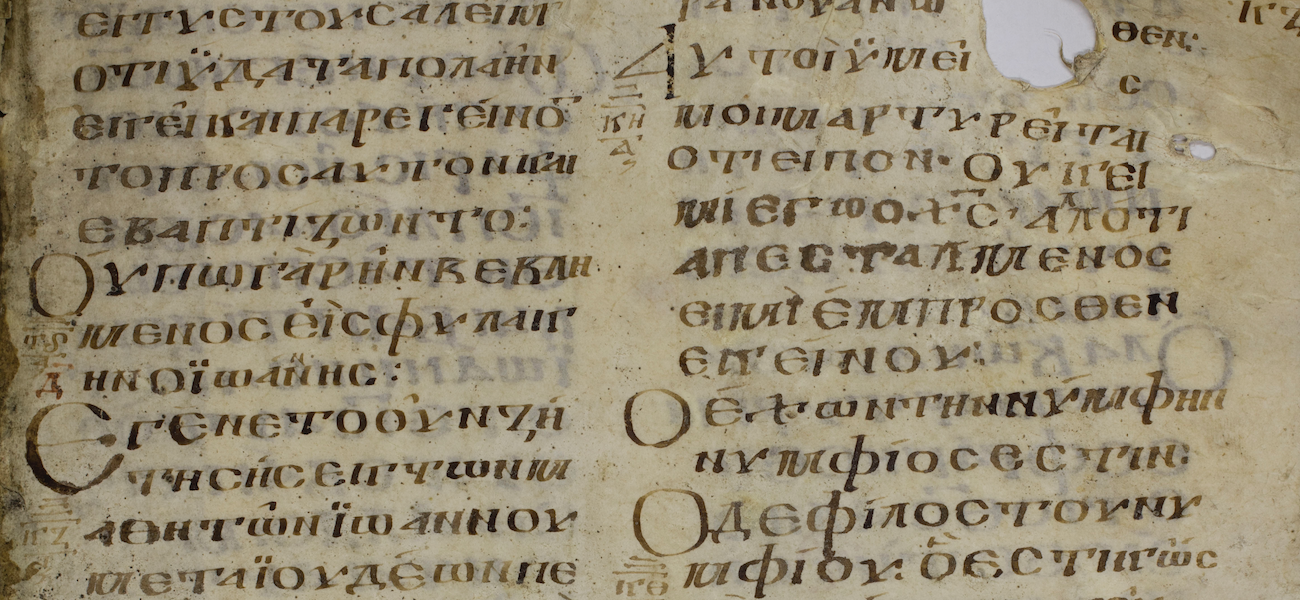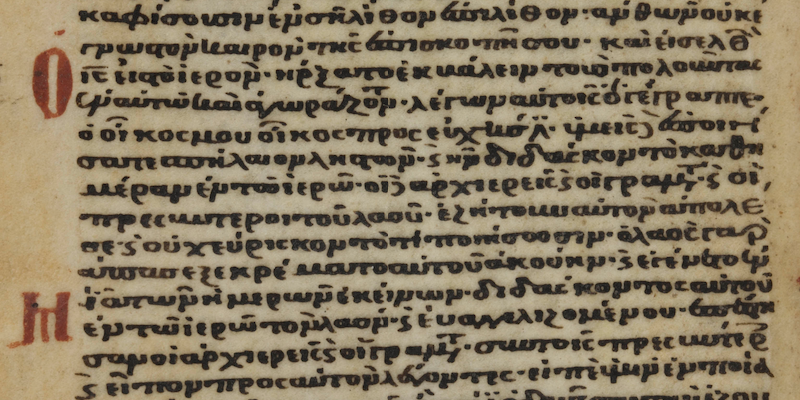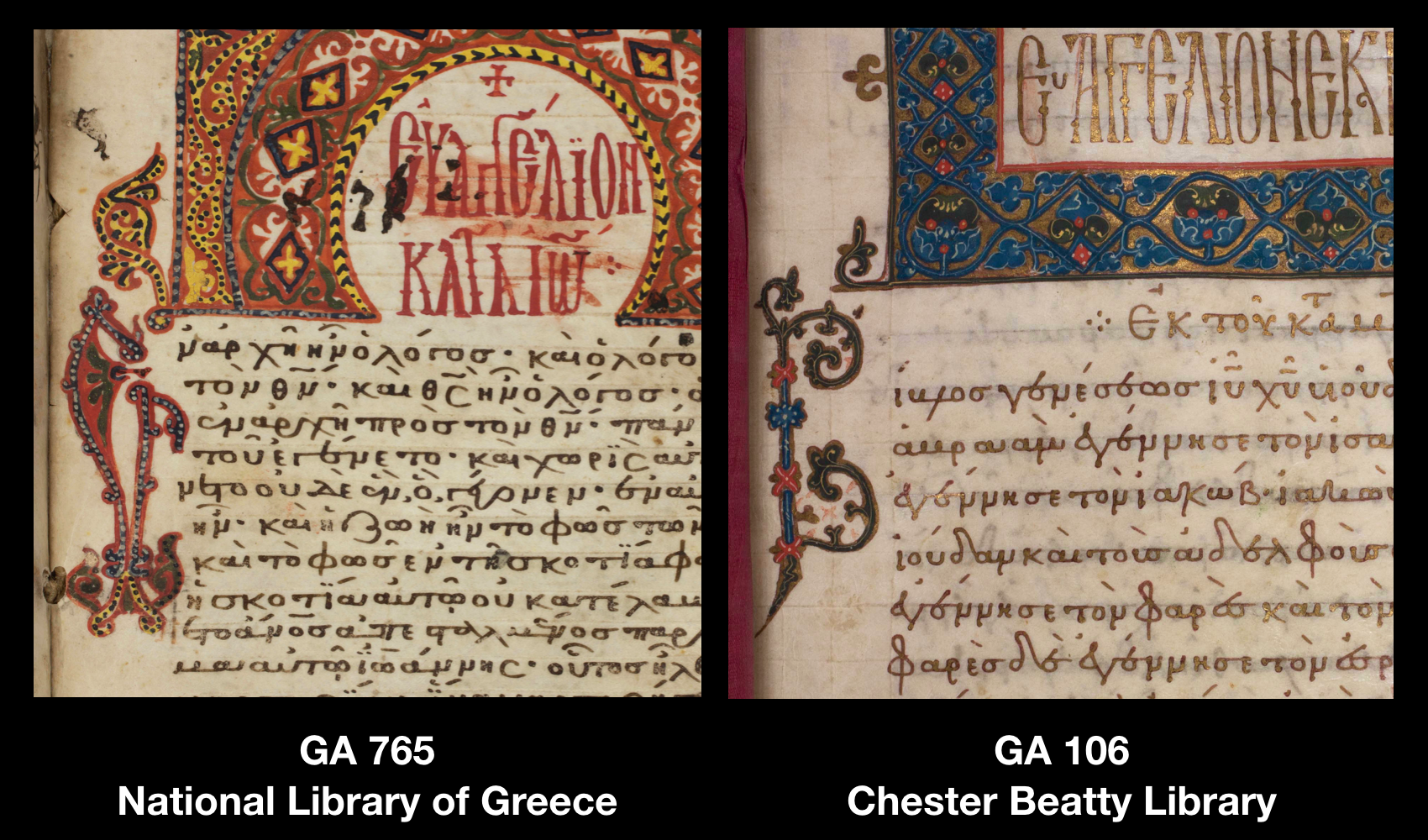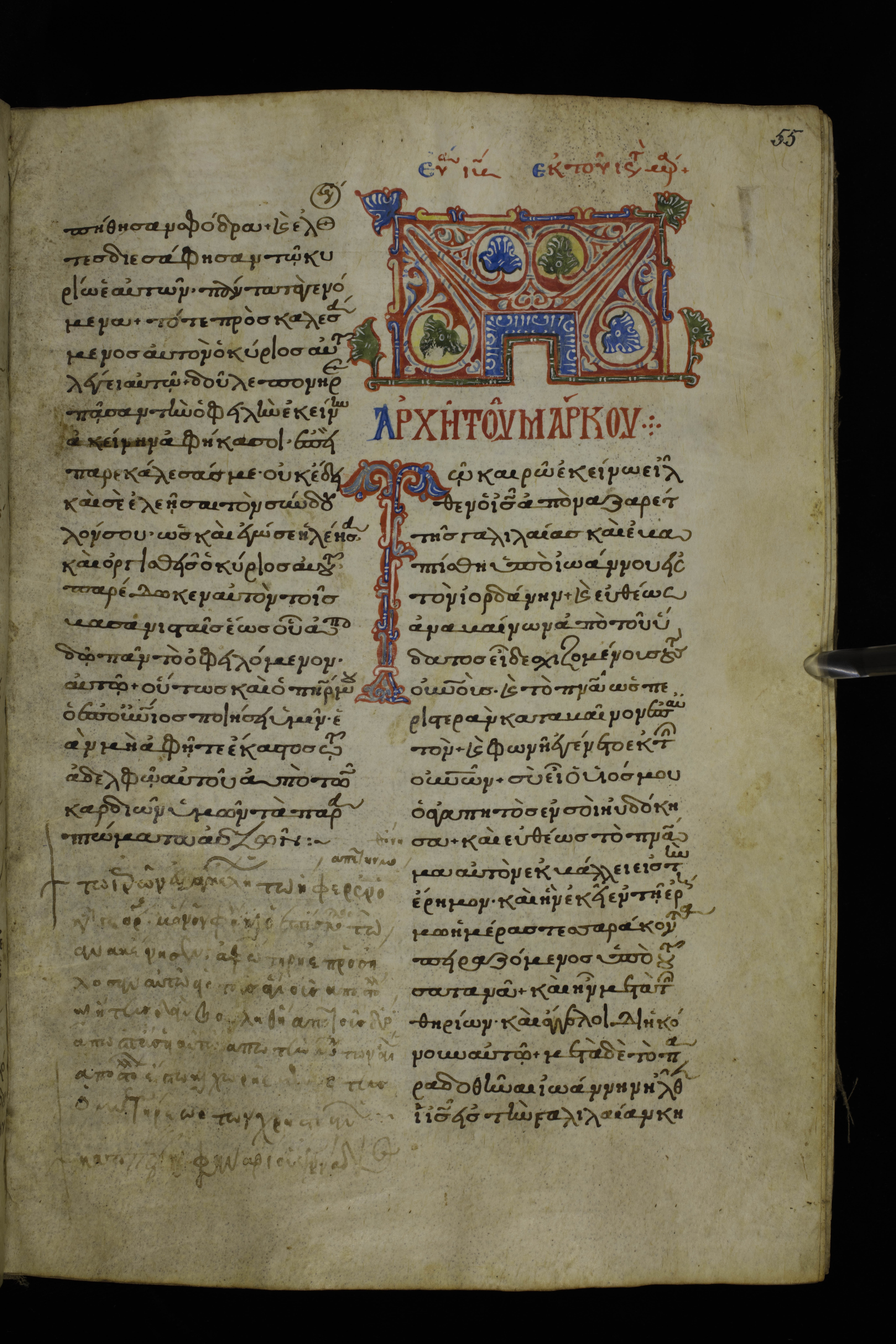By: Leigh Ann Thompson and Andrew J. Patton
New Testament manuscripts are not only vehicles of Scripture passed down to future generations through careful copying, but also are repositories of many features that make them unique, beautiful, easy to navigate, and eye-catching. One of the most common features are ektheses—a visual marker that signifies the beginning of a new paragraph or other section by giving the first letter prominence through color, decoration, or position on the page. These noticeable letters served to guide readers through the text, drawing their eye to the beginnings of passages. As you’ll see below, an ekthesis can vary in style—from the simple placement of the first letter of a line into the margin to the incorporation of elaborate decorations and even narrative scenes drawn into the form of the letter. The many ways scribes wrote these decorated letters and the striking beauty of the more elaborate ones makes them worth a closer look. In this post, we’ll examine a few different types of ektheses, working our way from the simple to the ornate.
Simple Decoration
The most common way that manuscript scribes and illuminators employed ektheses was to have very little or no decoration.

Codex Koridethi (GA 038) is a fine example of a manuscript using prominent letters without adding decoration. The scribe who copied this ninth-century manuscript used ektheses to break up the text of the Gospels using only a larger form of the letter placed into the left margin. On this page you can see multiple omicrons, an epsilon, and an alpha written in such a way.
Colorful Decoration

Other manuscripts use a slightly more decorative form of ektheses. Some copyists simply used a different color of ink, usually red, to highlight the incipit letter. You can see an example of this type of lettering in a thirteenth-century manuscript of the Gospels and Revelation from the National Library of Greece (GA 792).

Some copyists enhanced the letter with more detailed decorations. You often find these at the beginning of the Gospels. GA 765 is a thirteenth-century manuscript of the Gospels from the National Library of Greece. The manuscript’s illuminator went to great lengths to beautify the first epsilon of John’s Gospel. He or she used multiple colors and a dot pattern that blends nicely with the headpiece above.
Scribes commonly drew letters in a floral pattern. GA 106 is an eleventh- or twelfth-century manuscript of the Gospels from the Chester Beatty Library. The illuminator of this medieval manuscript began the book of Matthew with a beta drawn with a floral pattern in multiple colors and gold leaf.
These colorful and ornate letters added to the beauty of these New Testaments—enhancing the reading experience and conveying the value and worth of the Scriptures to the community.
Elaborate Decoration
In some of the more elaborate minuscule manuscripts and lectionaries we find beautiful examples of ektheses that are embellished with other objects or have been made into a picture themselves.

These examples from GA Lect 117, digitized at the Biblioteca Medicea Laurenziana in Florence, Italy, display historiated initials—an enlarged opening letter that contains a picture. Here the decorated letter also doubles as pictures of birds and a hand reaching through the middle of an epsilon. Note the hand in particular. Often, the opening page of an illustrated Gospel manuscript would depict a hand reaching down from the top of the page toward the evangelist to visually indicate that the biblical text was divinely given from God. The pictured hand resembles this common illustration, and the community that used GA Lect 117 would likely perceive its meaning when reading the passage.
Decorating Manuscripts Matters
Large letters set into the margin, ektheses, are one of the most common features you’ll find in New Testament manuscripts. This simple form of illumination pragmatically guided the readers through the text of the New Testament by marking off the paragraphs. But this ancient and medieval practice does not always mean the same thing that it does in modern language. In his latest book, An Introduction to the Greek New Testament Produced at Tyndale House, Cambridge, Dirk Jongkind writes, “Nowadays a paragraph is a building block in the hierarchical structure of the text. But in some of the manuscript paragraphing, one gets the impression that a paragraph is used to highlight what follows” (p. 36). In other words, these readily identifiable letters draw the reader’s attention toward a passage—emphasizing its significance—while sometimes guiding the reader structurally through the text.
Additionally, ektheses have a visual effect on the reader. The decoration of these large letters enhances the beauty of the manuscript‚ thereby conveying the value of the Scriptures to the people who read or even simply saw the biblical text. Simple features like large letters reflect the importance of texts for Christian communities throughout history.
** If you’re interested in seeing more examples of ektheses, our manuscript library can sort manuscripts with this feature if the page has been tagged. Under the heading “MS Feature” click the check box for “Ekthesis or Ornamented Letters” and the tagged manuscripts will populate. Once you click on the manuscript you’re interested in viewing, only those pages with the feature will be displayed in the thumbnail viewer.

